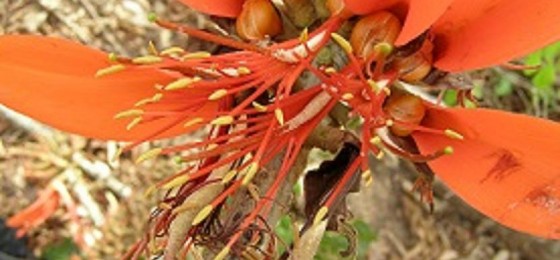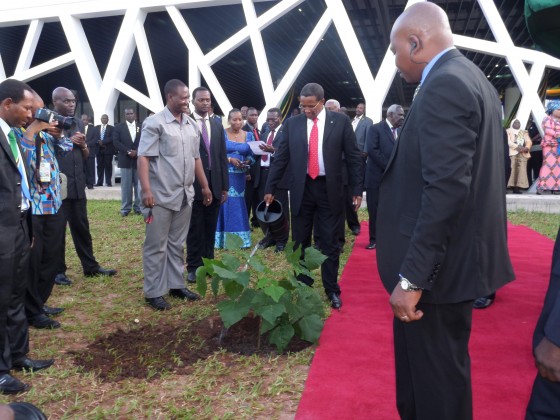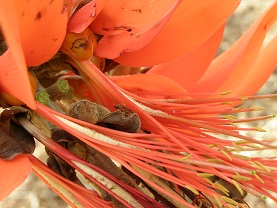
President Kikwete plants threatened tree to celebrate Union Day in Tanzania
26th April 2014 was Union Day in Tanzania, marking the 50th anniversary of the unification of Tanganyika and Zanzibar to form the United Republic of Tanzania. A ceremonial tree planting took place as part of the celebrations and President Kikwete planted a young Erythrina schliebenii tree, perhaps the most threatened tree species in Tanzania.

Lake Latumba Coral Tree, Erythrina schliebenii, is an attractive tree of the ‘coral tree’ genus, with beautiful flowers and a spiny trunk and branches. This tree is assessed as Critically Endangered on the IUCN Red List and was previously thought to be extinct when the known habitat of this species was cleared.
Many of Tanzania’s best botanists have played a part in the unique rediscovery and survival story of this charismatic species, making it an excellent selection for such an important tree planting event.
E. schliebenii was first discovered and collected in the 1930s, from an area of forest on the sides of Lake Lutamba, in Lindi District in southern coastal Tanzania. The area was cleared in the 1940s for a cashew nut plantation and following unsuccessful searches for the species it was declared Extinct in The World List of Threatened Trees (Oldfield, et al., 1998).
Leonard Mwasumbi, the late Superintendent of the University of Dar es Salaam Herbarium, searched for this species for a long time without success. He encouraged his colleagues, Frank Mbago and Phil Clarke, to continue the search for this species in a wider area.
Frank Mbago rediscovered the tree in Kilwa District at Namatimbili, a tiny patch of coastal forest about 115 km north of the original collection site, on an expedition funded by Danida under Erik Prins in 2001. Phil Clarke then worked hard to locate Mbago’s specimens that had been sent to European herbaria and bring them to the attention of Barbara Mackinder, a legume specialist at the Royal Botanic Gardens Kew, who verified the identity of the specimens as E. schliebenii in May 2011.
Immediately after the confirmation that E. schliebenii had indeed been rediscovered, WWF funded a follow up expedition in which botanists from Tanzania’s University of Dar es Salaam relocated E. schliebenii at Namatimbili and collected mature fruit and seeds. The total population observed at Namatimbili is about 12 mature individuals.
Phil Clarke, Neil Burgess, Frank Mbago, Cosmas Mligo, Barbara Mackinder and Roy Gereau ensured that the rediscovery was reported in the Journal of East African Natural History, and the Eastern African Plant Red List Authority re-assessed the conservation status of the species as Critically Endangered, as published on the IUCN Red List of Threatened Species in 2012.
The species has since been brought into a cultivation programme by Lenin Festo, Head Gardener of the Presidential State House in Dar es Salaam. He has successfully propagated five seedlings of this species, one of which was planted in the grounds of the State House by President Dr. J. M. Kikwete during Union Day celebrations.
It is hoped that the Union Day tree planting event and the President’s role in the conservation story of Erythrina schliebenii will generate further commitment and support for the conservation of this and other iconic and endangered tree species of Tanzania.

Click here to see the tree profile for Eyrthrina schliebenii.
In future, Lenin Festo intends to establish further collections and cultivation programmes for additional threatened species of the East African Coastal Forest Hotspot, in the State House Gardens.
Information was contributed to this post by Roy Gereau, Assistant Curator and Tanzania Program Director, Missouri Botanical Garden.